You can also listen to this article in the voice of own Plastic Artist Rosângela Vig:

The shadow uncoils in the lap
In the warm afternoon, in the faded indigo;
Sleep in the feverish heat ofego,
The soft nature of tiredness.
Slow stars! Step by step,
The folding desert, the thousand and thousand,
You come from that unknown within the fold
In a compact herd, and encheis space…
(BILAC, 1997, p.65)
Step by step 4 of how to draw
You can ramble through the words of Olavo Bilac and imagine the stars moving with the nightfall, coming, one by one, the blue firmament, in a lazy gait, as the late summer soft. With the description of the poet, Dark WINS relevance and the scene comes to life. So is poetry, so is the art. And the movement is among the attributes that lead to a work life.
Leonardo Da Vinci (2007, p.54) was correct in saying that "a good painter has two main objects to paint: the man and the intention of your soul; the first is easy, the second is more difficult, because he has to represent you by attitudes and movements of the members. " Although the aesthetic perfection has reached a peak in Renaissance, the final works of Michelangelo and Raphael, the drama took even more beauty to the works and brought to the Art History, the Mannerism. And the move exacerbated, the main characteristic of this style, led dynamism to the works.
The hands and arms in all their actions should display the intent of mind that moves, even as possible, because, through them, who has good judgement will show mental intentions in all their movements. (DA VINCI, 2007, p. 58)
There are purposes that promote the idea of action to a static scene, such as, the facial expression; the position of people's bodies and the fluttering clothes. It's as if an event, in its heyday, had been frozen in time. The dynamism is therefore, a feature of the beautiful work of Potter (Fig. 1), where the ring occurs in real time, While Angels bless with flowers, that voejam in children.
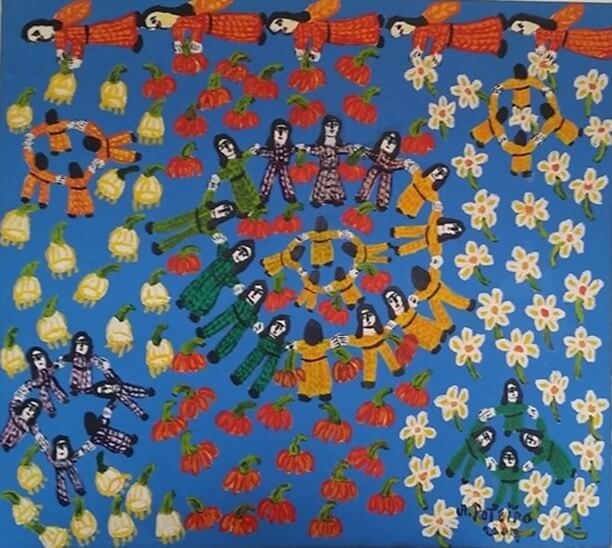
In figure 2, all the excitement of the dance was evidenced harmoniously by Izabel Pariz, through the poses of the people and running skirts. The action is reinforced by the ripples of fabric, and the shadows that the movement offers. All the characters seem to be in the same pace, and you can almost hear the music.
In the work of Rita Caruzzo (Fig. 3), No fluttering fabrics, but the Rainbow, whose colors move and swirl around the body of the woman, that seems to move in a gesture took, long, in a surreal scene.
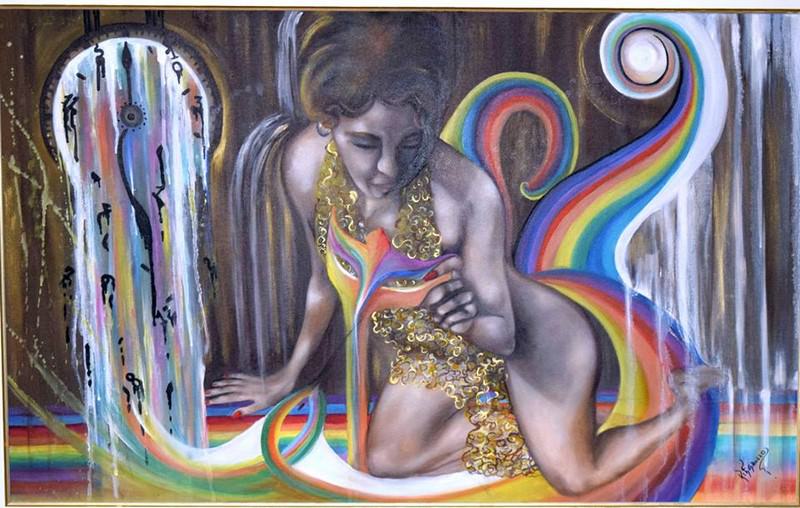
The exaggeration of the perspective is the characteristic of the work of Paul Byron (Fig. 4), character that enhances the feeling of movement. As the upper torso of the sambista and his musical instrument are larger than the bottom, the feeling is that he is dancing, tapping and throwing your body forward, in the direction of the beholder. The impression is that the man is playing up to our ear and closing, increasingly. And the sound of the batuque remains unconscious and increases with the proximity. Depending on how the figures stand in the picture, of its angle, its proportion and perspective, the image can lead to the impression of moving.
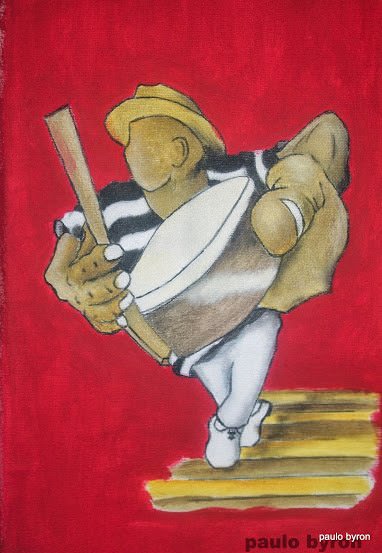
The movement is also on the objects and things that are part of a scene. To the rhythm of the wind, the flags (Fig. 5) also seem to dance, hectic, with ripples in their tissues. Their colors, Depending on the position and effect of the sunlight on them, also change and get different shades of blue, White and Red.
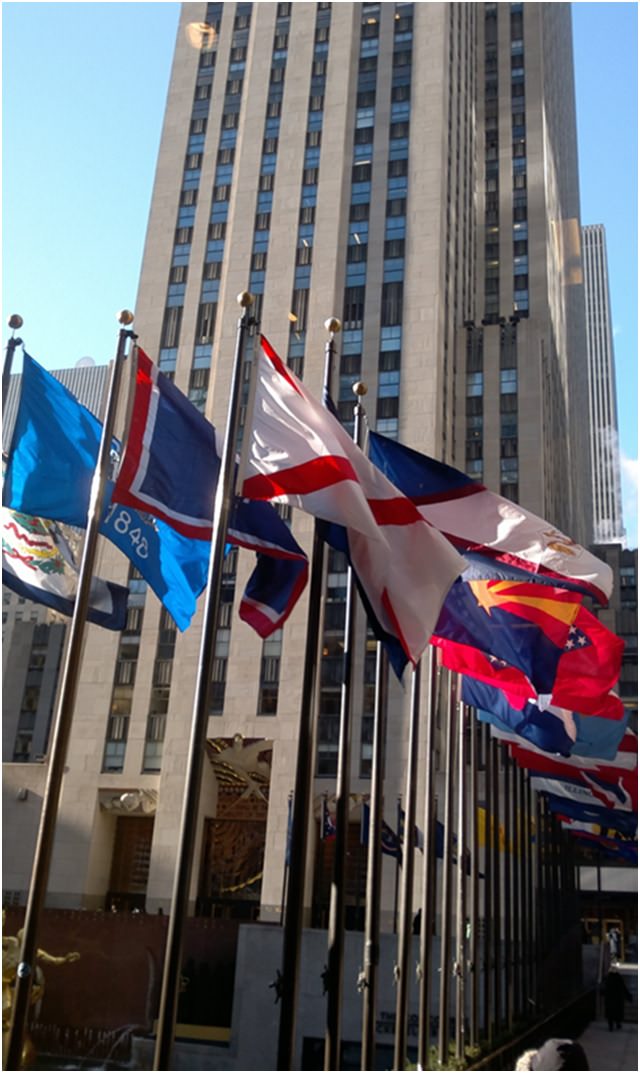
In scenes with water, as it can be seen in the Figure 6, the Lake has almost no movement and reflects the image of the surface, upside down. Notice if repeat, the blue of the sky, the trees and the buildings, whose details you can't need, because the water is clean and part of the bottom of the Lake is mixed in the image. As the ripples of the water are minimal, almost no changes in the reflected image.
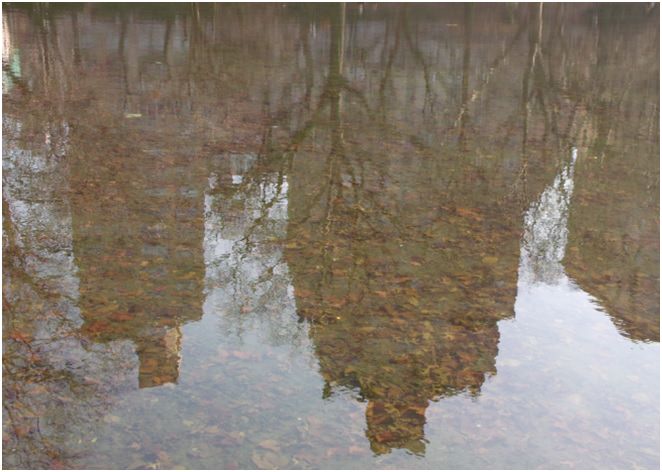
The figure 7, on the other hand, features a stream, whose constant motion is directed to the vanishing point, which is the right side of the scene. You can see this movement by the waves that form that way. On the waves, There are reflections of the sky, in white, because the day is cloudy. Part of the bottom of the river, the rocks and the vegetation can be seen, Once the water is very clean.
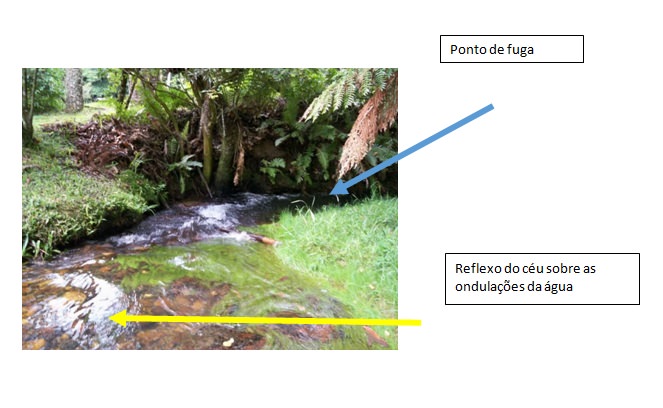
In the Marina of Carlos Helmut Japp (Fig. 8), the tranquillity seems to have reflected on water, that has little movement. There are short and small waves, You seem to be the result of a slight breeze.
Such calm does not occur with the figure 9, Since the sea is rough, due to a strong storm. The clouds in the sky, confirm the violent storm that churns the water. The waves agigantam raising the ship, which accentuates the feeling of AWE.
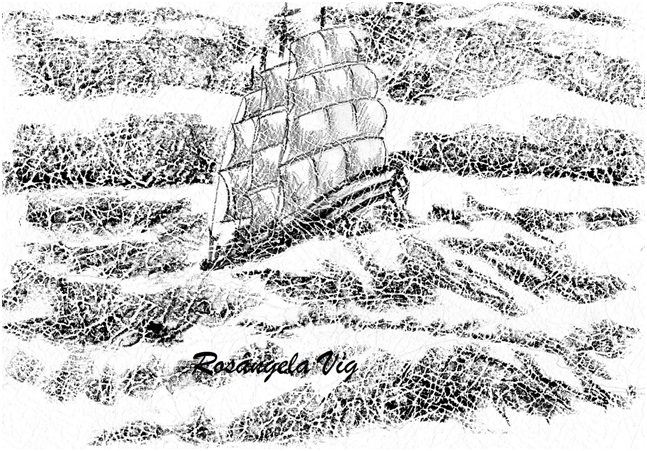
The abstraction of Clovis Loureiro, beautiful fantastic beings emerge and seem to jump off the screen. In the image (Fig. 10), the movement is due to its meandering and flexible formats, of their long wavy wings that appear to overlap each other; and its colorful and exotic harmony, about the black background.
The movement ends and takes soul to a work. The paint Masters knew well these secrets! And art is a whim of the artist, that includes the life with a look observer and differentiated; If drunk with simple and it extracts a purpose, an intention. To transpose this to the work, It loads of life, an inert scene; and make a play on the senses. The result, the beholder, might just be the wonder.
…
Liked? [highlight]Leave a comment[/highlight]!
You might also like:
- Painting on Canvas, Step by step 18 – Perception of colors and shapes by Rosângela Vig
- Design – Artistic Production, Step by step 17 of how to draw by Rosângela Vig
- Drawing – Painting on Canvas, Step by step 16 of how to draw by Rosângela Vig
- Design – Study of the Form, Step by step 15 of how to draw by Rosângela Vig
- Design – Artistic Production, Step by step 14 of how to draw by Rosângela Vig
- Design – Artistic Production, Step by step 13 of how to draw by Rosângela Vig
- Design – Artistic Production, Step by step 12 of how to draw by Rosângela Vig
- Design – Artistic Production, Step by step 11 of how to draw by Rosângela Vig
- Design – Artistic Production, Step by step 10 of how to draw by Rosângela Vig
- Design – Artistic Production, Step by step 9 of how to draw by Rosângela Vig
- Design – Artistic Production, Step by step 8 of how to draw by Rosângela Vig
- Design – Artistic Production, Step by step 7 of how to draw by Rosângela Vig
- Design – Artistic Production, Step by step 6 of how to draw by Rosângela Vig
- Drawing and Painting – The Abstract, Step by step 5 of how to draw by Rosângela Vig
- Drawing – Study of Colors, Step by step 3 of how to draw by Rosângela Vig
- Drawing – Study of Light and Shadow, Step by step 2 of how to draw by Rosângela Vig
- Drawing – Study of Perspective, Step by step 1 of how to draw by Rosângela Vig
Articles about the Art History of Rosângela Vig:
References:
- BILAC, Olavo. Antologia Poética. Porto alegre, RS: L & PM Editores, 1997.
- DA VINCI, Leonardo. Grandes Mestres da Pintura. Folha de São Paulo. S. Paulo, 2007.
- KANDINSKY. Olhar sobre o Passado. São Paulo: Ed. Martins Fontes, 1991.
- MATHEW, Vinícius. Book of Sonnets. São Paulo: Companhia das Letras, 1991.
- MEIRELES, Cecília. Espectros. São Paulo: Ed. Global, 2013.
- QUINTANA, Mário. Quintana de bolso. Porto Alegre: Ed. L & PM, 2004.
- VAN GOGH, Vincent. Grandes Mestres da Pintura, Folha de São Paulo, S. Paulo, 2007.
The figures:
Fig. 1 – Ciranda, Oil on canvas, Antônio Poteiro.
Fig. 2 – Africans IX, Oil on canvas, Izabel Pariz.
Sign up to receive Event News
and the Universe of Arts first!
Fig. 3 – The blooming of the Hours, Oil on canvas, Rita Caruzzo.
Fig. 4 – Samba, Acrylic on canvas, Paulo Byron.
Fig. 5 – Flags in the wind, Photo of Rosângela Vig.
Fig. 6 – Mirrored in Lake City, standing water, Photo of Rosângela Vig.
Fig. 7 – Stream, moving water, Photo of Rosângela Vig.
Fig. 8 – Marina, Boats, Indian ink on paper, Carlos Helmut Japp.
Fig. 9 – Ship in the midst of the storm, Oily pastel on paper Crackle, Rosângela Vig.
Fig. 10 – Magnificent, Oil on canvas, Clovis Loureiro.
ROSÂNGELA VIG
Sorocaba – São Paulo
Facebook Profile | Facebook Fan Page | Website
Columnist at Website Obras de Arte
E-mail: [email protected]

Drawing – Movement, Step by step 4 of how to draw by Rosângela Vig
http://t.co/UsUXzs4anM
Drawing – Movement, Step by step 4 of how to draw by Rosângela Vig
http://t.co/UsUXzs4anM http://t.co/2HRJnWmMst
Drawing – Movement, Step by step 4 of how to draw by Rosângela Vig
The movement is also on the objects and… http://t.co/HCKv6CaZGN
Drawing – Movement, Step by step 4 of how to draw by Rosângela Vig http://t.co/y3L7Ilp5ov
Study on oo movement in art site… http://t.co/UEkivk7oa7
Share my new article on the movement… http://t.co/gzyBWOnmOL
Study on the movement http://t.co/J7ZP5SvQAJ
Drawing – Movement, Step by step 4 of how to draw by Rosângela Vig http://t.co/VH9XntIwKG
Drawing – Movement, Step by step 4 of how to draw by Rosângela Vig https://t.co/YauKMzII0x
Drawing – Movement, Step by step 4 of how to draw by Rosângela Vig http://t.co/y3L7Il7uwX
Drawing – Movement, Step by step 4 of how to draw by Rosângela Vig http://t.co/3645o1vY79
@jlgoldfarb good night, I would like to share my story about the movement in art
http://t.co/y3L7Il7uwX
Study of the design movement in sit artworks… http://t.co/xlVV3LKOTf
Drawing – Movement, Step by step 4 of how to draw by Rosângela Vig http://t.co/nfhik0s7sb